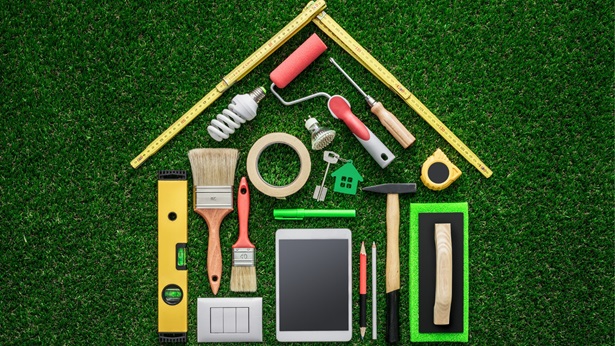Building More Efficient Homes Through Remodeling
Q-and-A with Bill Owens

Bill Owens is founder and president of Owens Construction in Worthington, Ohio.
You’ve been in the construction industry for nearly 40 years now. How have green remodeling trends have changed over time?
We had the early pioneers who were doing remodeling, but renewable energy projects such as solar, wine and hydro were really being done in a silo. What started to change things were the energy tax credits to help incentivize, and performance-based building codes and energy modeling starting in the 1980s. Things have really evolved since I got involved eons ago, particularly with having options to show with modeling how you are meeting code. Also as time has gone on, a systems-based approach to green remodeling has really evolved and changed how things are done from a more holistic perspective.
Since the pandemic, what changes have you seen in demand for third-party verified high-performance home certifications and interest in indoor air quality (IAQ)?
Healthier environments and IAQ were definitely at play before, and then reinforced during the pandemic. More specifically, those concepts are resonating with millennials; they value indoor environmental quality and IAQ highly. The pandemic has certainly brought these issues more into focus, and we’ve probably seen an uptick in inquiries. When you certify to third-party verified high-performance home certification such as NGBS, there’s a huge marketing opportunity, too.
What are the biggest barriers are for completing deep energy retrofits cost effectively in your local area?
We have a ripe opportunity with the age of the housing stock in Ohio because there are a tremendous number of old homes. Cost is a big barrier, particularly for deep energy retrofits. Your home owner/ client is the main driver of the budget. A lot of times if a client is concerned about cost, the features in the home that they see seem to win out; granite counter tops completing items that will lower their electric bill.
What support or programs would you like to see to help green remodelers tackle greenhouse gas reduction for existing homes more efficiently?
Ohio is one of the richest coal states. There’s a rich history here, and in Kentucky and West Virginia. If I’m speaking about my marketplace, I think full electrification is decades away. A few things might really work well, though:
- Beef up state and federal tax credits for renewables and for deep energy retrofit work, and
- Add in more rebates.
I also think showing the public how much they can save by putting in more efficient equipment and by tightening up the home. If there was a better consumer education tool out there to show people that they can get reasonable paybacks, that would be great.
What advice would you give to existing or new high-performance home builders who want to break into the remodeling world?
Just take a look at the numbers: Less than 2 million housing units are built a year. It’s well documented that our housing stock is aging, with 130 million to 140 million units of potential housing stock to upgrade. It’s such a large opportunity with how old and inefficient many existing homes are. The cumulative national energy consumption is huge, and remodeling has a high potential for large gross profits.
Although there is that opportunity, you do also have to be tolerant of existing and hidden conditions, and the clients. There’s really a great potential return; you just need a little bit of patience. Patience with the home owner, coupled with how many houses are out there that need this work, and the sky is the limit.
If you’re a builder, you can remodel, and if you can remodel, you can be a builder. Green remodeling is a way to augment your business. You just have to make sure to build the right contingencies in your contracts, because you’ll likely be dealing with lead-based paint, parking and other unit owners around you if it’s multifamily.



